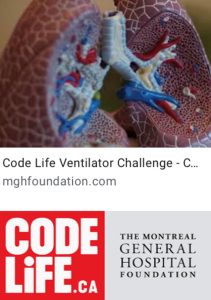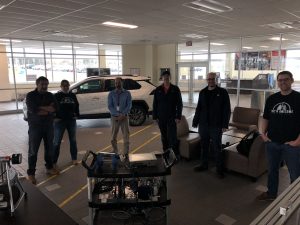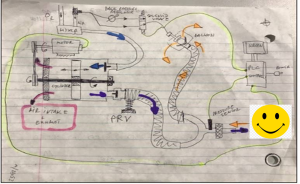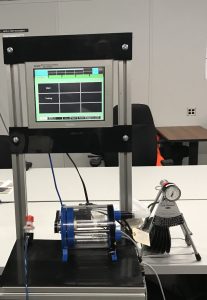1.2 Clinical Health Research Application
Health Application: An Example of Using Health Research Pillar 2
Yvonne Drasovean, RRT, M.Ed., FCSRT
![]()
My name is Yvonne Drasovean; I am a Registered Respiratory Therapist and professor in the Respiratory Therapy program at Fanshawe College. What follows is an example of turning challenges into opportunities and the importance of critical reasoning and the ability to solve problems that are sometimes outside the practice norm.
On March 11, 2020, the World Health Organization declared the novel coronavirus (COVID-19) outbreak a global pandemic. The chaos of news and information from around the world that followed brought on a heightened state of awareness for healthcare workers. There was so much to learn, prepare and provide so that Canada’s healthcare force could rise to the challenge of supporting patients’ needs. Between fear of the unknown and the excitement of making a difference for the community, every respiratory therapist stepped up to the occasion. As the pandemic critically affected an increasing number of patients, there was an acknowledged shortage of ventilators worldwide.

In response, on March 18, the Montreal General Hospital Foundation, in collaboration with the Research Institute of the McGill University Health Centre, launched a global innovation challenge, Code-Life-Ventilator-Challenge, calling for teams to design a simple, low-cost, easy-to-manufacture and easy-to-maintain ventilator which could be deployed anywhere needed to save lives. The idea was that the wide availability of rapid manufacturing (3D printers, CNC machines) combined with low-cost computers (such as smartphones and tablets) would offer the possibility of a simple, broadly available ventilator with sufficient performance to help hospitals get through the pandemic. Team requirements asked for at least one relevant medical professional with publicized credentials (proof of right to practice), and one relevant technical/engineering professional with credentials to approve safety requirements, and each team member must provide a short resume of qualifications relevant to the design (engineering degree or industry experience). To say that building a low-cost, simple, easy-to-use and easy-to-build ventilator is a challenge is probably the understatement of the year. I challenged my fellow professor in respiratory therapy, Dave Wall, to attempt the challenge. As ventilator users, we realize that all ventilators used in our ICUs have many hours of research and development behind them to make them inherently intuitive to a trained user.

We partnered up with four engineers from Toyota Canada, and on March 20, we assembled the team and entered the competition. This moment gave us renewed purpose and pride in our profession. This was the time to put our critical thinking and research skills into practice. The work began on Monday, March 23, to design a ventilator and meet the deadline of March 31, when the best ten ventilator designs were selected to continue to the semifinals. Over 900 participating teams have over 2500 participants from about 90 countries in this initial competition phase. And so, we were off, venturing into this unknown world to give our best effort at a seemingly impossible task: designing and building the COVINATOR FT (F for Fanshawe, T for Toyota).

We started educating each other on engineering processes and clinical applications of mechanical ventilation. The engineer printed 3D parts, assembled pieces every day, and built a prototype ventilator. After only seven days, when the prototype was completed, we finally met as a team under social distancing guidelines for the first time at the Toyota Woodstock assembly plant. Our challenges were far from over. For example, we realized that standard medical connections we are accustomed to, such as DISS medical gas connections, were not standard in car manufacturing facilities. We adapted to the situation and macgyver’d fittings and connections to make things work. The Covinator-FT was packaged up and sent on a truck to Montreal for feedback from the judges.

The Covinator FT is a time-triggered pressure-controlled ventilator that has the potential to safely ventilate patients in a time of need. An incredibly innovative addition we are very proud to offer is the ability to control the Covinator-FT remotely with a tablet. This can reduce clinician exposure by allowing changes to ventilation without entering a contaminated area. The Covinator FT can also use one central controller ( tablet) to manage a fleet of Covinator-FT ventilators in the ICU. The user would be able to check the ventilation status of multiple patients and make changes as needed. Regardless of the outcome, the rewards of this challenge were never about prize money or exposure but rather the ability to apply and share our team’s knowledge and innovation to make a difference. We are proud that the Covinator-FT was selected as one of the top nine entries to the Code-Life Challenge semifinals. We plan to use the Covinator at Fanshawe College for teaching purposes to inspire innovation and encourage student respiratory therapists to think outside the box, collaborate in multi-disciplinary teams, and, every once in a while, try to do the impossible.

